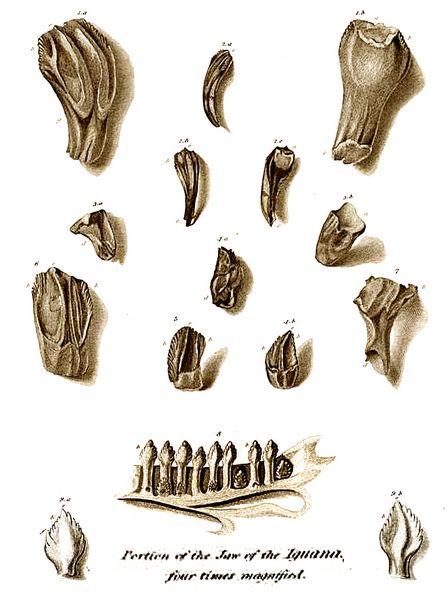Athena Review Image Archive ™
Iguanodon teeth drawn by Mantell (1825)

Teeth of Iguanodon (Mantell 1825)
Iguanodon
bernissartensis was
a large plant-eating dinosaur, widespread in Asia, North America, and
Europe during a two million-year interval at the end of the Jurassic
and start of the Cretaceous periods (126-124 mya).
The earliest Iguanodon fossils were found in 1822 by Gideon Mantell, who discovered the first fossil Iguanodon teeth, and eventually found much of its skeleton. Mantell (1825) originally identified that the teeth of Iguanodon were similar to those of a herbivorous reptile such as the Iguana (hence the genus name he selected).
The
upper jaw held up to 29 chisel-like teeth per side, lacking any at the
front of the jaw, while the lower jaw had 25 teeth meeting the upper
teeth, but broader. Because the reptilian teeth were continually
replaced, Iguanodon could eat tough plant material such as tree leaves and grasses.
Iguanodon
rested and walked mainly on its four legs, but could stand up to forage
for food. With a body length of about 10 meters, it was up to 4-5
meters high, and could eat eat food ranging from ground plants to tree
foliage.
References
Mantell, G. 1825
Copyright © 1996-2020 Rust Family Foundation (All Rights Reserved).